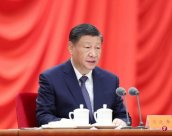In China last year, both automobile production and sales exceeded 30 million vehicles for the first time, a record high.
According to CCTV News client, the China Automobile Industry Association announced on Thursday (January 11) that the number of automobile production and sales in China in 2023 was 30.161 million and 3.094 million, respectively, an increase of 11.6% year -on -year increased by 11.6%, respectively 11.6%.And 12%.
Data show that the number of exported cars in China in 2023 reached 4.91 million, an increase of 58%year -on -year. It is expected to surpass Japan to become the world's first car exporter.At present, Chinese cars have exported to more than 200 countries and regions.
China ’s automobile exports have grown rapidly in the past three years.Before 2020, China's automobile exports remained at about 1 million years, and in 2021 increased rapidly to 2015,000, and in 2022, it increased to 3.111 million, surpassing Germany's ranked second in the world.
Traditional fuel vehicles are still the main force of Chinese vehicle exports, but with the vigorous promotion and support of the Chinese government in recent years, new energy vehicles such as pure electric vehicles have become the core growth point of Chinese vehicle exports.
Data show that in 2023, China's new energy vehicle exports were 1.2.03 million, a year -on -year increase of 77.6%.In the fourth quarter of last year, the Chinese electric vehicle giant BYD beyond US competitors Tesla became the world's largest pure electric electric electricityAutomobile manufacturer.
According to Reuters, foreign car companies have continued to decrease in share in the Chinese market.The German Volkswagen's two joint ventures FAW -Volkswagen and the Shanghai Volkswagen in the Chinese market totaling a total of 14.2%, which is less than 14.8%in 2022; the market share of the joint venture established by Toyota and GAC and FAW in Japan is 7.9%.It is less than 8.6%in 2022.
These data reflect the competitors that foreign car companies are losing their losses to China. They face multiple challenges during the transition of electric vehicles, such as fierce price wars, slowing economic recovery and weak demand after the epidemic.



